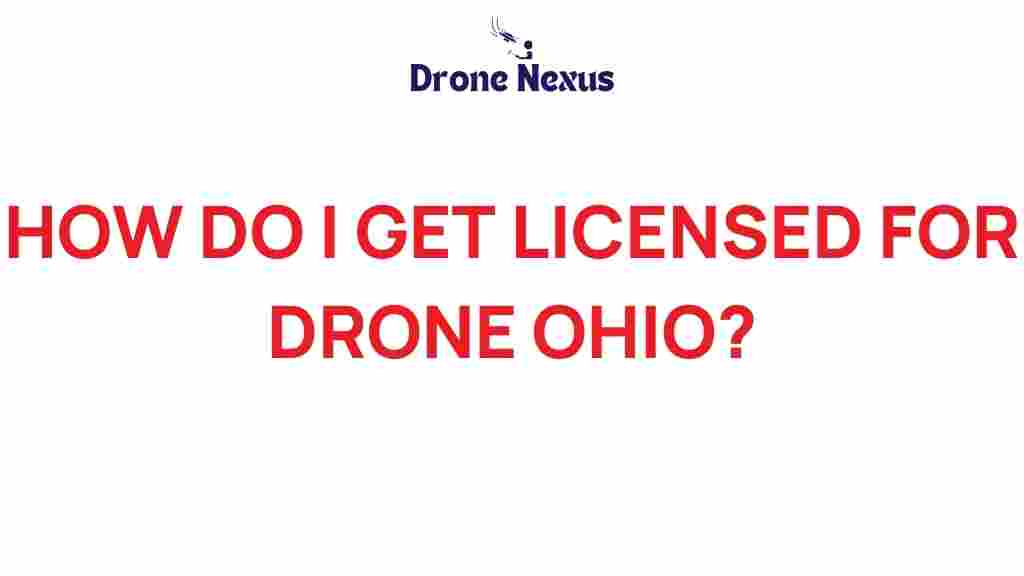Drone Licensing in Ohio: What You Need to Know
As technology continues to evolve, drones have become increasingly popular for both recreational and commercial use. In Ohio, understanding the requirements for drone licensing is essential for safe and legal operation. This guide will help you navigate the complexities of drone licensing in Ohio, ensuring that you are well-prepared to take to the skies.
Understanding Drone Licensing
Drone licensing refers to the process of obtaining the necessary certifications and permissions to operate a drone legally. In Ohio, this process is regulated by the Federal Aviation Administration (FAA) and local authorities. Whether you are a hobbyist or a professional drone pilot, it is crucial to familiarize yourself with the licensing requirements.
Types of Drone Licenses
There are two primary types of drone licenses available in the United States:
- Recreational License: For hobbyists flying drones for fun.
- Part 107 License: Required for commercial drone pilots who use drones for business purposes.
Step-by-Step Process for Obtaining Your Drone License
Now that you understand the types of drone licenses available, let’s delve into the step-by-step process for obtaining your drone licensing in Ohio.
1. Determine the Type of License You Need
Before you begin the licensing process, identify whether you need a recreational or Part 107 license. This will dictate the subsequent steps you need to take.
2. Register Your Drone
If you plan to fly a drone that weighs more than 0.55 pounds (250 grams), you must register it with the FAA. Registration can be completed online and involves paying a small fee.
3. Study for the Knowledge Test
For a Part 107 license, you must pass the FAA’s Aeronautical Knowledge Test. Study materials are available through various online resources, including:
- FAA’s official website
- Drone training courses
- Online forums and communities
4. Schedule Your Test
Once you feel prepared, schedule a test date at an FAA-approved testing center. The test consists of multiple-choice questions covering various topics, such as:
- Airspace classification
- Weather effects on flying
- Emergency procedures
5. Pass the Test
On the day of the test, arrive at the testing center with your identification and any necessary materials. A passing score will grant you a certificate, which is critical for obtaining your Part 107 license.
6. Apply for Your Remote Pilot Certificate
After passing the test, you’ll need to apply for a Remote Pilot Certificate through the FAA. This process includes:
- Filling out FAA Form 8710-13
- Submitting your application online
- Passing a background check
7. Receive Your License
Upon approval, you will receive your Remote Pilot Certificate, allowing you to operate drones for commercial purposes legally.
Tips for Maintaining Your Drone License
Once you obtain your drone licensing, it’s essential to keep it current and in good standing. Here are some tips:
- Stay Informed: Regularly check for updates to regulations affecting drone operations.
- Renew Your License: Keep track of the expiration date and renew your license as required.
- Practice Safe Flying: Always follow safety guidelines to ensure the safety of yourself and others.
Troubleshooting Common Issues
Even with the right licensing, you may encounter issues while flying your drone. Here are some common problems and their solutions:
1. Drone Not Responding
If your drone is not responding to commands:
- Check the battery level.
- Ensure you are within range.
- Restart the drone and remote.
2. GPS Signal Loss
If you experience a loss of GPS signal:
- Move to an open area with fewer obstructions.
- Wait a few moments for the signal to reconnect.
3. Flying in Restricted Areas
If you accidentally fly into restricted airspace:
- Immediately land your drone.
- Familiarize yourself with local airspace regulations to avoid future incidents.
Conclusion
Obtaining your drone licensing in Ohio is a straightforward process, but it requires careful attention to detail. By following the steps outlined in this guide, you can ensure that you are legally compliant and ready to enjoy the benefits of drone flying. Whether for personal enjoyment or commercial purposes, being a licensed drone pilot allows you to unlock the skies responsibly.
For more information on drone regulations and flying safely, visit the FAA’s official website. Additionally, connect with local drone enthusiasts and professionals through forums and social media to stay updated on best practices and events.
Ready to take off? With your drone licensing in hand, the sky’s the limit!
This article is in the category Safety and created by DroneNexus Team
